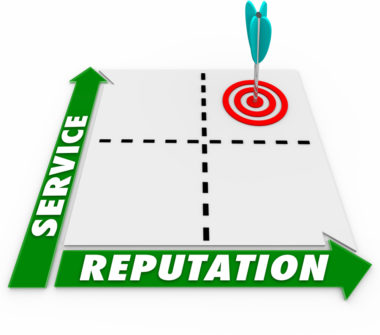With a few exceptions, negative items will not appear in your credit report after seven years. On the plus side, positive information stays indefinitely, though closed accounts, such as a cancelled credit card, can eventually be excluded as well. However, having an old delinquency age off your credit report doesn’t mean the debt is gone or forgiven. Let’s look at how long an item will last on your credit report, and what to do if a negative item persists longer than it should.
Table of Contents
The Seven Year Credit Rule
The Seven Year Rule is a fairly simple concept: For the most part, any negative item on your credit report will drop off the report after 7 years. As the item gets older, it often has less of an impact on your credit score calculation, and it fully stops affecting your score when it is dropped at the 7-year mark.
On the other hand, positive entries will last indefinitely, so long as the account remains open. The longer the account is open, the more it contributes to your credit score. If, however, you close an account, it will drop off of your report after 10 years. During that time, though, it will continue positively adding to your report, though it won’t continue to age with your open accounts.
Here’s some of the major negative entries and how long they stay on your report:
Bankruptcy After 10 Years
The biggest negative is bankruptcy. Unfortunately, it’s also one of the few exceptions to the Seven Year Rule, and why we are starting the list with it. Not only can it drop your credit score anywhere from 150 to 200 points, it stays on the report for 10 years. This counts for Chapter 7 and 11 filings, from the day of the filing, not the discharge. On the bright side, Chapter 13 only stays for 7 years. Be warned that debt settlements can have nearly the same effect on your credit as a bankruptcy, although they typically only remain visible for 7 years.
Foreclosures and Short Sales After 7 Years
Both foreclosures and short sales stay on your report for 7 years. Note that short sale could appear on your report as a charge-off, settlement, or deed in lieu of foreclosure. If the bank has skipped steps in the foreclosure process, however, you may want to dispute the foreclosure on your credit report.
Collections Accounts After 7 Years
Bad news if your auto loan went to collections: It will stay for 7 years. Since 35 percent or so of your credit score is based around on-time payments, this is an especially bad mark on your credit report.
Charge-Offs After 7 Years
If your credit card debt has become a charge-off, where you failed to make minimum payments for six months, your credit report will suffer for 7 years. This is one of the worst negative marks on a credit report.
Tax Lien After 7 Years
Tax liens, when you have not paid your taxes, appear on your credit report for 7 years. In terms of what it does to your credit, a tax lien carries a similar weight as bankruptcy. It does not go away if the lien is paid off, unless the IRS withdraws the lien from public record due to an error or a special circumstance.
Late Payments After 7 Years
Did you forget to make a payment on your credit card and made it late? Unfortunately, that small mistake will haunt you for 7 years. Thankfully, a single late payment is not the biggest hit to your credit, and its impact will lessen as time goes on and you continue making regular payments.
Inquiries After 2 Years
Hard inquiries on your account, such as when shopping for a house or car, or trying to open a new credit card account, will have a minor impact on your credit score. Thankfully, they only appear on your report for 2 years, and affect your credit for half of that.
If you make multiple hard inquiries while shopping around for the best deal, such as approaching multiple mortgage lenders while trying to buy a house, the inquiries are grouped together for a 45-day window, rather than each affecting your score.
If the hard inquiry was made without your knowledge, however, you can dispute the entry.
Debt Over Seven Years Old
Negative items will disappear from your credit report, but the debts aren’t automatically forgiven. You will still owe the money, and may be targeted by collections agencies. There may be new negative items that appear on your report as new collectors try to reach you.
If you pay a delinquent account, it doesn’t restart the seven year reporting timeline on the debt. There’s no sense in not paying, or collectors will continue trying to contact you.
However, you can send cease and desist letters to get the collectors to ease up while you get the money together. In either case, it’s best to pay off the loan. If the debt is legitimately not yours, be sure to ask for a debt validation or you could feel the effects of a debt that is not yours. If you continue failing to pay, it may become a charge-off, which is even worse for your credit score.
If there are items on your report that should not be there, and are affecting your score, dispute them with the credit agencies.
To prevent any of these entries from appearing on your report, visit our article on how to find and fix bad financial habits. If you already have negative marks on your credit report, visit our credit repair guide to learn how you can rebuild your credit.
Image Source: https://depositphotos.com/





